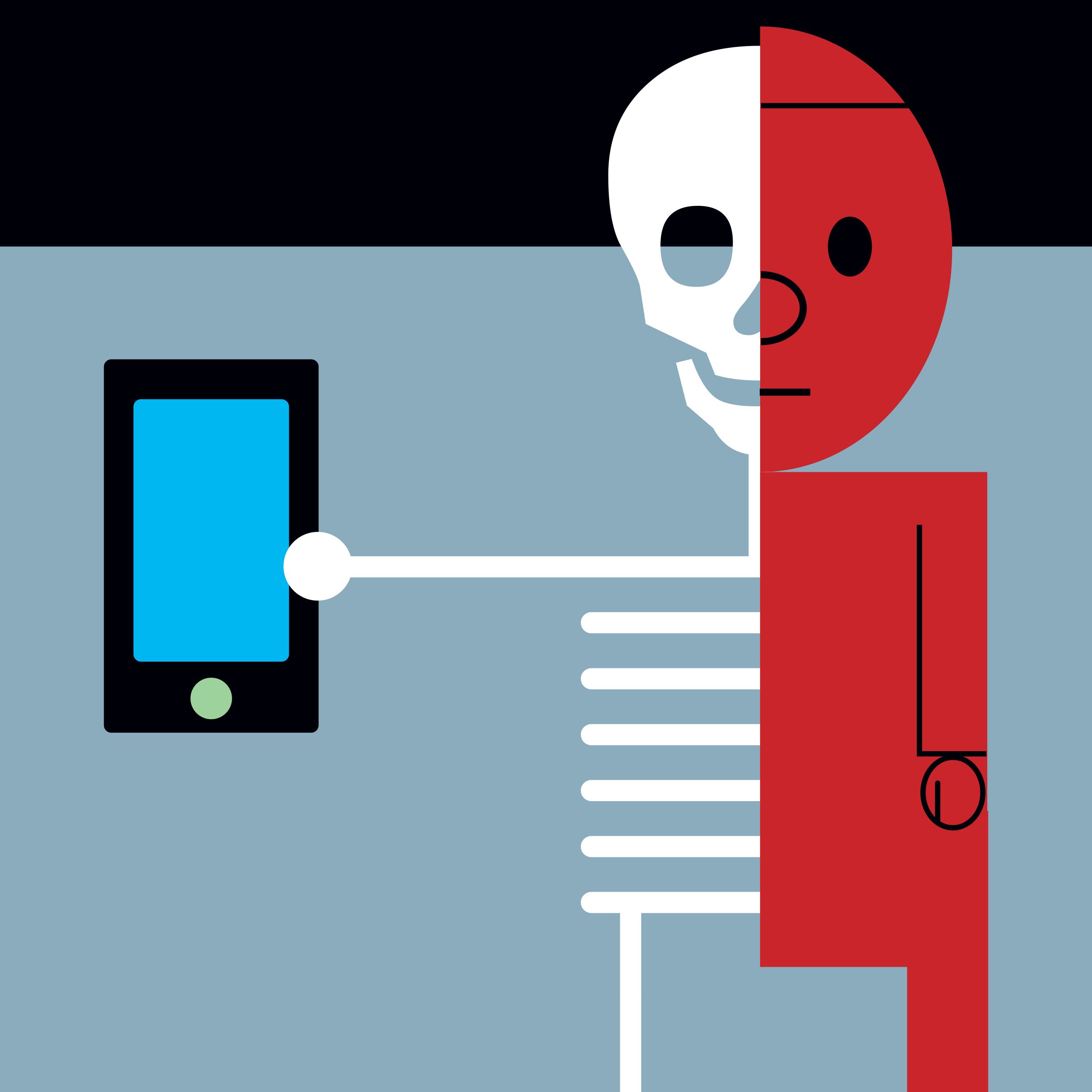The Ultimate Generation
One of 5G's biggest selling points is faster data rates than any previous generation of wireless-by a lot. Millimeter waves are part of what's making that possible. 5G's use of millimeter waves, a higher-frequency band than 2G, 3G, or 4G ever used, has forced service providers like AT&T and T-Mobile to rethink how 5G networks should be deployed, with higher frequencies requiring small cell sites located more closely together.
6G, while still just a hazy idea in the minds of wireless researchers, could very well follow in 5G's footsteps by utilizing higher frequencies and pushing for faster data rates. So let's have some fun with that-assuming such qualities remain important for future generations of wireless, where will that take us? What will 8G look like? 10G? And at what point does this extrapolation to future generations of wireless no longer make physical sense?
Of course, most of these imagined wireless generations are completely absurd. Future generations of wireless will surely push for more data capacity and faster speeds, but researchers will develop and refine new techniques to get more out of the same bands of spectrum. Techniques like massive MIMO are already accomplishing that in 5G networks. In the future, who knows? Perhaps AI can manage our spectrum, or other ideas will emerge.
6G Illustration: J. D. King
Illustration: J. D. King We already have some (very) rough ideas for what the next next generation of wireless will be like. It could include terahertz waves, which researchers have used to transmit data up to 20 meters. Suddenly, concerns about placing 5G small cells every 150 meters don't sound as outrageous (doing so would still be expensive, however). If 6G continues the small cell densification, be prepared to dodge small cells every 10 meters when you're out and about. But hey, at least the download speeds will improve by a factor of 1,000.
6G, arriving in 2028: 1 terabit per second, 3 terahertz frequencies, 7.7 seconds to download Avengers: Endgame in 4K.
8G Illustration: J. D. King
Illustration: J. D. King Let's jump ahead to 8G, when we've skipped past the visible light spectrum and we're now using near-ultraviolet to text one another. With 8G, we now have to worry about ionizing versus non-ionizing radiation. There's always been concern that cell phones cause cancer, but conventional cell signals are lower energy and therefore non-ionizing radiation. With 8G, throw that assumption out of the window-ultraviolet radiation is very much ionizing, and if we just blast it from every cell tower, cell networks will definitely cause cancer. Then again, maybe not: With these wavelengths, networks could see a greater reliance on beamforming rather than wide-area coverage. 8G could turn cities into deadly but precise games of invisible laser tag, as base stations beam data to our devices while narrowly missing us.
8G, arriving in 2048: 17.2 petabits per second, 3.65 petahertz frequencies, 435 milliseconds to download Avengers: Endgame in 4K.
10G Illustration: J. D. King
Illustration: J. D. King Don't you hate it when you break a bone and you have to go all the way to a hospital to get it x-rayed? Just wait until you have a 10G smartphone (not to be confused with 10G broadband, which already exists!) 10G will use hard x-rays-the kind used for medical x-rays and airport security-to transmit data, and I'm willing to bet at least one startup will market a DIY x-ray app as the killer app for 10G. So while that's a plus, the downsides are cancer and serious skin burns, which will just become more severe as wireless signals continue to move up the spectrum.
10G, arriving in 2068: 314 exabits per second, 4.44 exahertz frequencies, 24.5 nanoseconds to download Avengers: Endgame in 4K.
11G Illustration: J. D. King
Illustration: J. D. King We're now using gamma rays to download podcast episodes and stream videos. If you're wondering where else gamma rays come from, well, the two major sources are cosmic rays-actually near light-speed particles-colliding with molecules in the atmosphere, and nuclear fusion. So, the bad news is that calling someone requires bombarding both phones with the same radiation produced by a hydrogen bomb test. But the good news is you'd be able to download the entire data capacity of human civilization in about 3 seconds, give or take, which means at least that will be done before you die from the radiation poisoning.
11G, arriving in 2078: 41.8 zettabits per second, 155 exahertz signals, 184 picoseconds to download Avengers: Endgame in 4K.
15G Illustration: J. D. King
Illustration: J. D. King 15G is the end. If anyone tries to sell you a 16G smartphone, ignore them because that would be absolutely ridiculous. With 15G, we're using ultra-high-energy gamma rays (yes, that is the actual term). Theoretically, there could be wavelengths of light shorter and more high-energy than these, but physicists have never observed them. These energies are pretty much only observed with incredibly high-energy photons that come out of deep space. Phone calls will be broadcast with photons that individually have the same amount of energy as a pellet shot from an air rifle. You'll need to buy new phones often, as even the most reinforced phones will see physical damage from each download. So will you-gamma rays have more than enough energy to break apart DNA molecules.
15G, arriving in 2118: 1.31 queccabits per second (Fun fact: I had to look up proposed SI prefixes because by this point, we're beyond the official SI scale!), 230 yottahertz signals, 500 zeptoseconds to download Avengers: Endgame in 4K (Another fun fact: This is only about 290 times more than the "natural unit" of time, 1.3x10^-21 seconds).